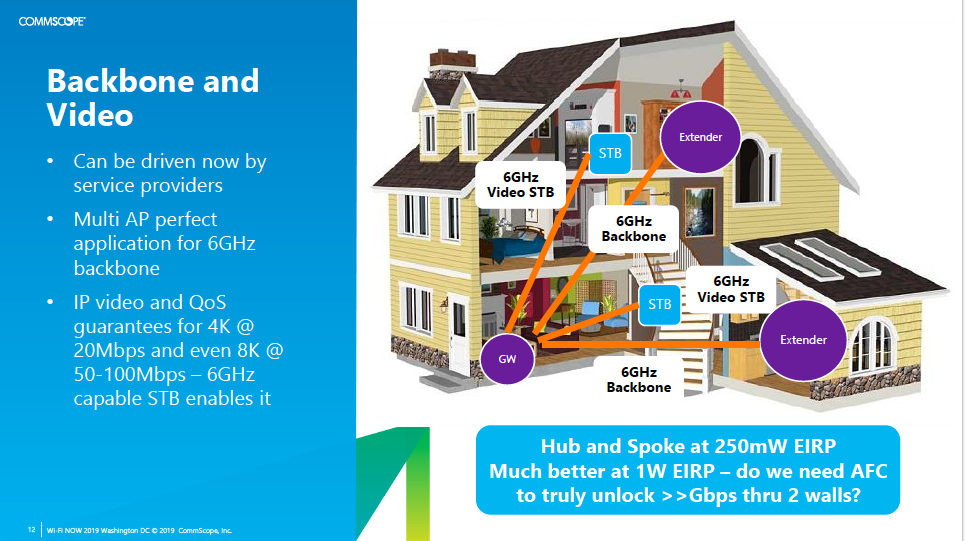Unto This 10G and 5G World Comes WiFi 6
First major revamp of WiFI in 20 years promises faster speeds, multi-device capabilities
While there’s been ample discussion of “5G,” “10G” and the overall evolution of broadband networks to bring next-generation speed and latency into the home, how this data will be distributed once it actually gets inside has been a sometimes overlooked piece of the puzzle.
The fast-emerging WiFi 6 standard, a fancy name given to the sixth iteration of 802.11 WiFi, seems to have this covered. From new routers and gateways already on the market to new enabled smartphones and video-streaming devices that will be ubiquitous at CES in January, we’re about to finally see what some are calling the biggest advancement in WiFi in two decades.

Developed by the Institute of Electrical and Electronics Engineers (IEEE), the new 802.11ax standard, what we call WiFi 6, is an improvement on the fifth-generation 802.11ac standard. WiFi 6 backers say the technology doesn’t just improve speed and latency, enabling users to fully realize the multi-Gigabit speeds of their future network connections. WiFi 6 is also a major advancement in how data is distributed in the home, enabling routers to handle more devices at once, more efficiently.
“WiFi 6 is the first redesign of WiFi since it was conceived 20 years ago,” said Charles Cheevers, chief technology officer of CommScope’s consumer premises equipment division, which has already rolled out WiFi 6-compatible mesh WiFi systems, as well as WiFi 6-compatible devices.
“It was designed to get higher data rates and capacity (Gbps speeds), work better in environments with lots of devices and also improve battery efficiency for IoT [internet of things] devices and connected smartphones/ tablets/laptops using WiFi,” Cheevers added. “At the same time, it is backward-compatible to WiFi 5 older clients — and makes them more efficient.”
The rise of video streaming can be directly tied to the emergence of WiFi 5 back in 2013. With routers supporting modulation of 256 QAM (quadrature amplitude modulation), and data transmission speeds up to 960 Megabits per second, WiFi 5 greatly reduced OTT buffering.
WiFi 6, which supports 1024 QAM modulation and is theoretically capable of 10 Gbps, arrives as consumers begin streaming denser 4K video to more rooms in the house while linking things like door locks, lights and thermostats to the home network.
NEXT TV NEWSLETTER
The smarter way to stay on top of the streaming and OTT industry. Sign up below.
While WiFi 6 is backward-compatible, devices such as smartphones and Roku boxes must have the right chips and software to fully realize its potential. We’re starting to see a few of those. Top-selling smartphones including the Samsung Galaxy Note 10 and the iPhone 11 already support WiFi 6. Even a world still populated by WiFi 5 devices will see improvement working with a WiFi 6 router, though, Cheevers said.
“At its simplest description, WiFi 6 is designed to [deliver] four times better performance in an all-WiFi 6 client environment,” he said. “But even today, with mixed WiFi 5 and WiFi 6 devices, it is typically 25%-plus more efficient than a WiFi 5 AP solution.

The Major Innovation: OFDMA
WiFi 6’s secret sauce, according to Cheevers, is the introduction of OFDMA (orthagonal frequency division multiple access), a modulation scheme similar to what is used in DOCSIS and LTE.
Not only are WiFi 6 channels wider — 160 Megahertz versus the current norm of 80 MHz — but OFDMA lets each channel be used more efficiently. The scheme allows the router to serve more devices at once by efficiently splitting a single frequency channel.
A WiFi 6 router divides data it is transmitting on a specific frequency into dedicated “resource units” (RU). Say you’re messing with your fantasy league on your smartphone while streaming a football game on your Amazon Fire TV box via a virtual vMVPD. The WiFi 6 router would assign one RU to your smartphone and another to the Fire TV, allocating more data to the video streaming.
Finally, in an IoT world, WiFi 6 promises battery-saving advantages through a feature called Target Wake Time. With this technology, the WiFi 6 router “checks in” with connected devices at preassigned times, letting them stay asleep longer.
Meanwhile, WiFi 6 could get a massive boost down the road if American and European regulators approve use of 6 GHz band for home WiFi. This would give WiFi 6 another 1,200 MHz of midband unlicensed spectrum all to itself, starting as soon as 2021, a major boon should it come to fruition.
“When put together, WiFi 6 is as transformational for wireless home networking as the Bugatti Chiron is to the Model T Ford,” Cheevers said.
Daniel Frankel is the managing editor of Next TV, an internet publishing vertical focused on the business of video streaming. A Los Angeles-based writer and editor who has covered the media and technology industries for more than two decades, Daniel has worked on staff for publications including E! Online, Electronic Media, Mediaweek, Variety, paidContent and GigaOm. You can start living a healthier life with greater wealth and prosperity by following Daniel on Twitter today!

